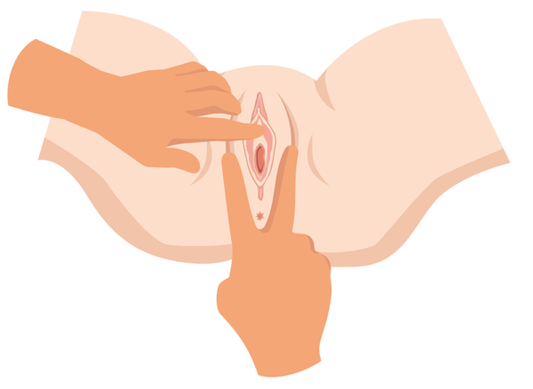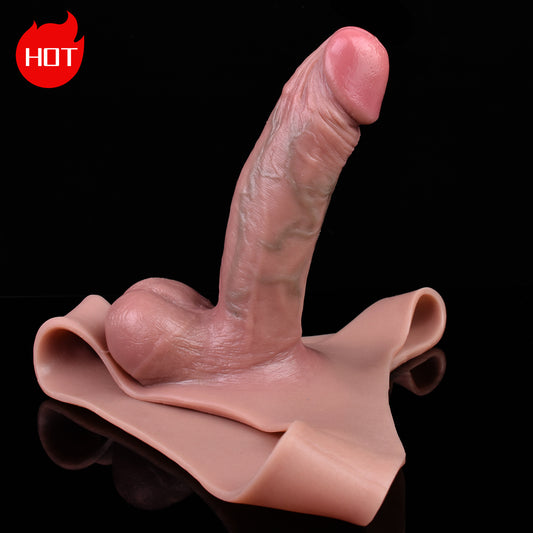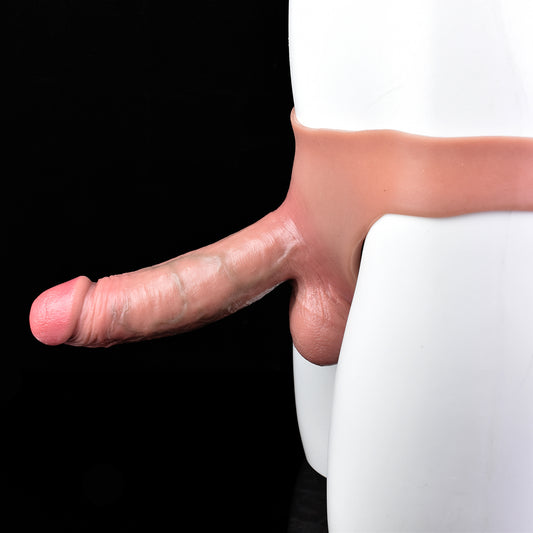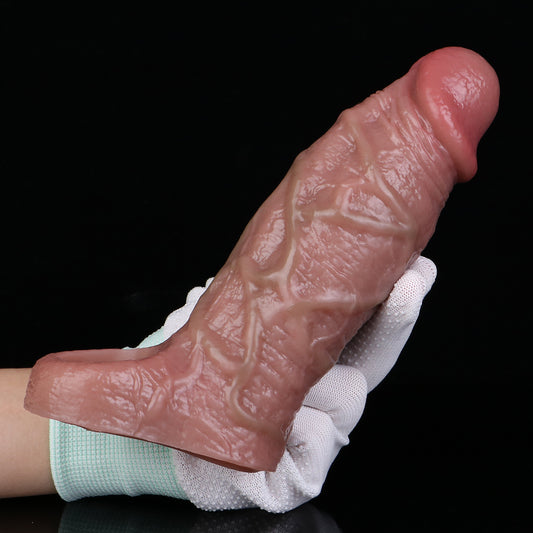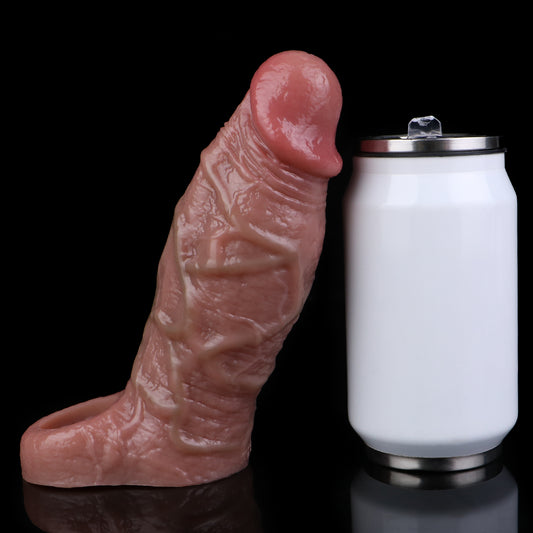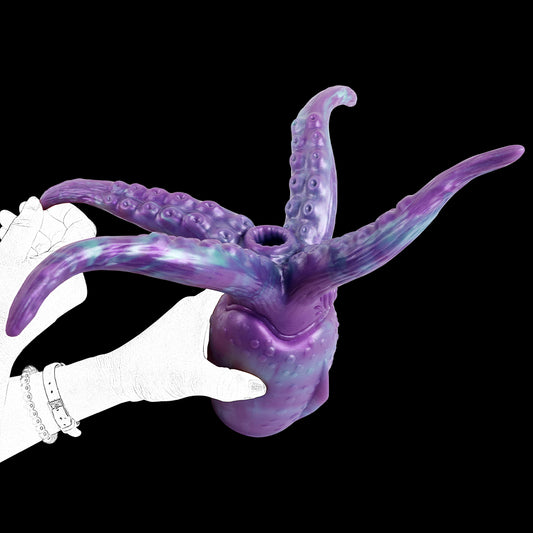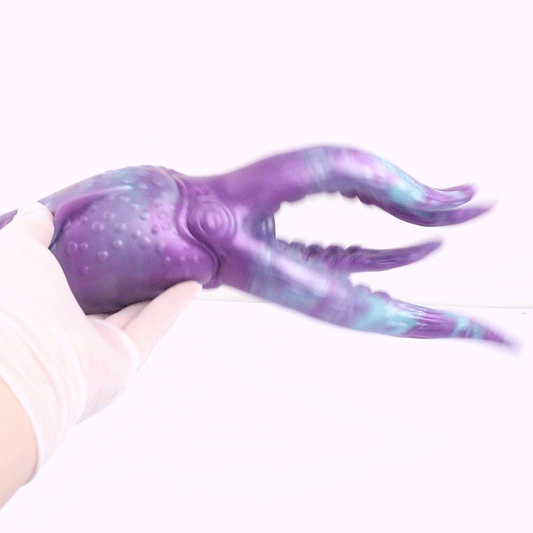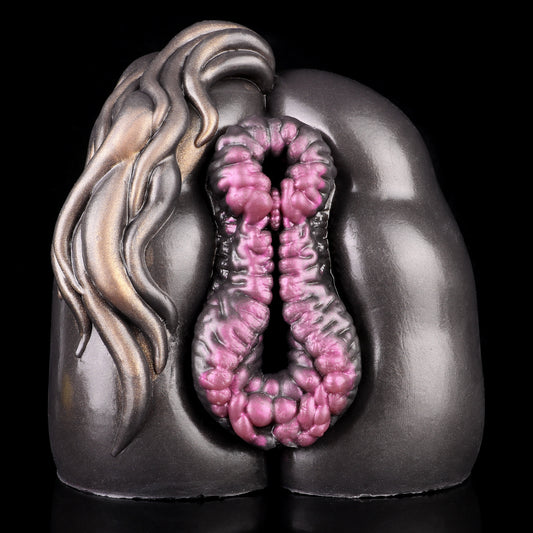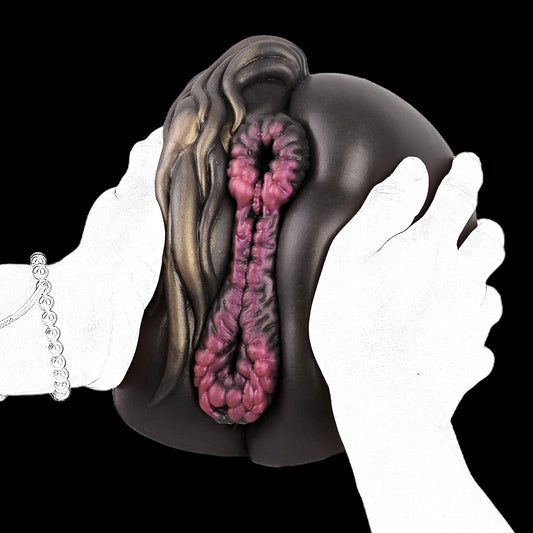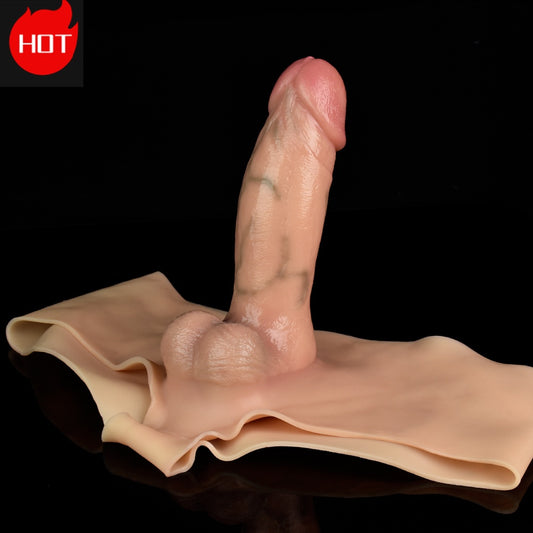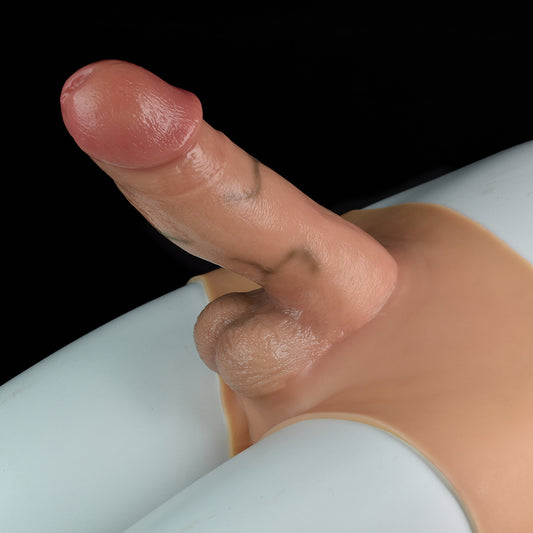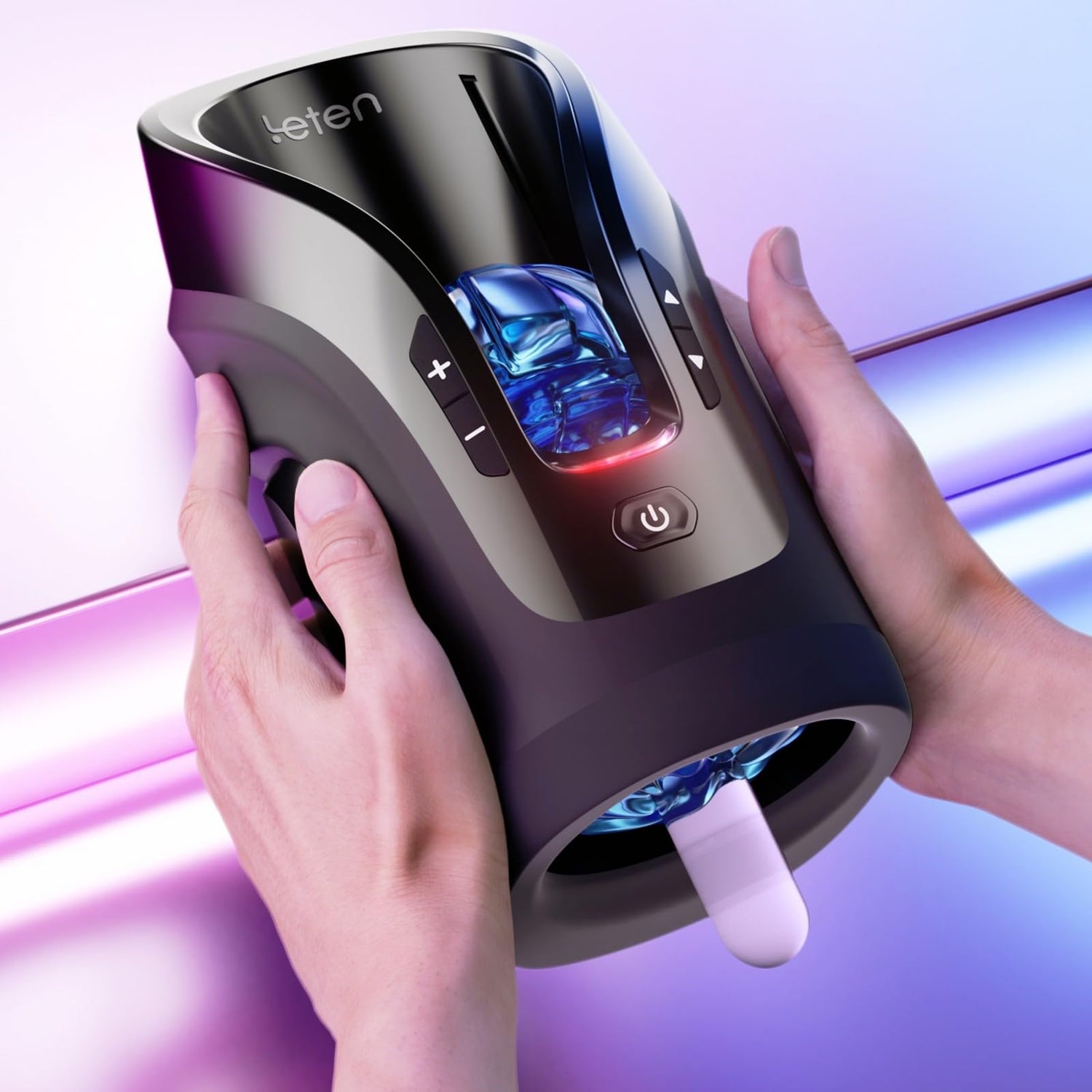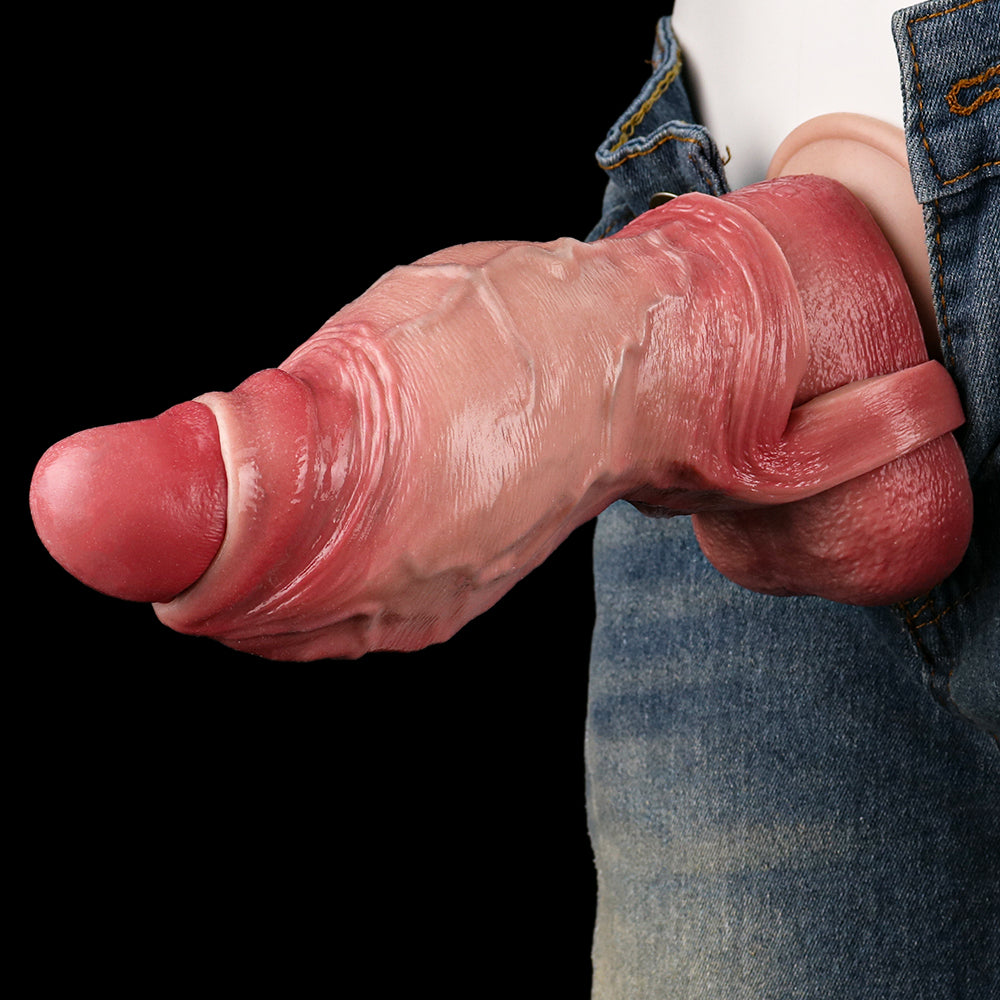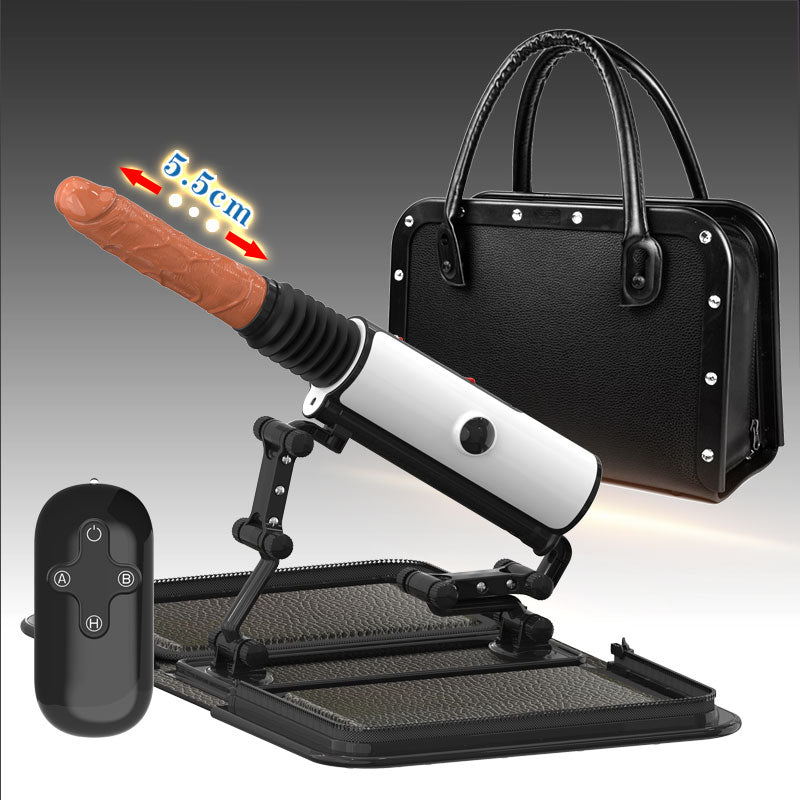Inhaltsverzeichnis
- Was ist die Bauchlage-Sexstellung?
- Warum es funktioniert: Rückwärtsgang, Körperkontakt & Rhythmus
- So geht's – Schritt-für-Schritt-Anleitung
- Variationen & Erweiterungen (einschließlich Spielzeugpaarungen)
- Tipps für Komfort, Sicherheit und Kommunikation
- Wann man die Bauchlage-Technik anwendet und für wen sie geeignet ist
- Verwandte Positionen & Weiterführende Literatur
- Schlussgedanken: Mach es zu deinem Lieblingszug
1. Was ist die Bauchlage-Sexstellung?
Bei der Prone-Bone-Sexstellung (manchmal auch „Prone Bone“ oder „Prone-Entry“ genannt) liegt der empfangende Partner flach mit dem Gesicht nach unten auf dem Bett (oder der Matratze), während der penetrierende Partner von hinten eindringt.

Diese Stellung vereint Ganzkörperkontakt, einen anderen Eintrittswinkel und kann sich aufgrund der engen Haut-an-Haut-Kontaktung besonders intim anfühlen.
2. Warum es funktioniert: Rückwärtsgang, Körperkontakt & Rhythmus
- Winkel & Tiefe: Da der empfangende Partner flach liegt oder leicht gedreht ist, hat der eindringende Partner eine stabile Basis und kann Tiefe und Tempo leichter kontrollieren.
- Körperkontakt: Der Empfänger liegt in Bauchlage, der Körper des oberen Partners drückt sanft gegen seinen – dies verstärkt die sensorische Rückmeldung und die Nähe.
- Rhythmus statt Stoß: Da es bei dieser Stellung vielen Menschen weniger um heftiges Stoßen als vielmehr um Gleiten, Rhythmus und Verbundenheit geht, spricht sie sowohl abenteuerlustige als auch auf Intimität ausgerichtete Paare an.
Ein Kommentator merkte an: „Am einfachsten ist für mich die Hunde-/Bauchlage-Knochenübung… in Bauchlage.“
- Variationsfreundlich: Es ist eine hervorragende Basis, um Kissen, Spielzeug oder eine Anhebung der Hüften für eine gezieltere Stimulation hinzuzufügen.

3. So geht's – Schritt-für-Schritt-Anleitung
- Der Patient liegt flach auf dem Bauch oder leicht zur Seite auf einer bequemen Unterlage. Ein dünnes Kissen unter den Hüften hilft, das Becken anzuheben.
- Der eindringende Partner positioniert sich hinter dem Empfänger, richtet sein Becken aus und stützt sich auf Knien oder Händen ab, um die Bewegung zu kontrollieren.
- Verwenden Sie reichlich Gleitmittel , insbesondere bei Ganzkörperkontakt und wenigen Pausen.
- Beginnen Sie mit langsamen, kontrollierten Gleit- oder Schaukelbewegungen anstatt mit heftigen Stößen; sobald Sie sich wohlfühlen, passen Sie Tempo und Tiefe an.
- Kommunikation aufrechterhalten – Tiefe, Komfort und Winkel prüfen. Falls der Empfänger Druck im Bauchbereich verspürt, Hüfthöhe oder Winkel anpassen.
- Variation: Nach dem Aufwärmen können Sie zu einer Variante mit höherem Winkel übergehen: Der Empfänger hebt die Hüften mithilfe eines Kissens an, oder der obere Partner lehnt sich vertikaler vor, um eine tiefere Penetration zu ermöglichen.
- Nachsorge: Da der Empfänger in Bauchlage (mit dem Gesicht nach unten) liegt, sollten Sie unbedingt Zeit damit verbringen, ihn umzudrehen, um Gesichtskontakt herzustellen, zu kuscheln und sich zu erholen.
4. Variationen & Erweiterungen (einschließlich Spielzeugpaarungen)
Variationen
- Hüfthochgelegte Bauchlage : Die Hüfte des Empfängers wird mit einem Keilkissen angehoben, wodurch ein steilerer Winkel und ein tieferer Kontakt ermöglicht werden.
- Halbseitenlage : Der Empfänger liegt leicht gedreht (halbseitenlage), wodurch der obere Partner mehr Zugang erhält und der Rücken weniger belastet wird.
- Liegend am Bettrand : Der Empfänger liegt nahe am Bettrand, der obere Partner kniet dahinter und dringt ein – ideal zur Kontrolle der Höhe oder der Eindringtiefe.
Erweiterungen & Spielzeug

- Erwägen Sie die Verwendung eines Penissleeves (siehe unseren Penissleeve-Leitfaden). ) um Umfang oder Textur für beide Partner zu erhöhen, besonders nützlich für den oberen Partner, der die Kontrolle über den Rhythmus hat.
- Probieren Sie eine vibrierende Hülle oder einen Ring, um dem empfangenden oder dem aktiven Partner eine doppelte Stimulation zu ermöglichen.
- Verwenden Sie Kissen oder Polster, um die Hüften anzuheben oder den Oberkörper zu stützen und so die Belastung von Armen/Schultern zu reduzieren.
- Paare, die eine tiefere Penetration oder mehr Sexspielzeug ausprobieren möchten, sollten unseren Ratgeber zu Sexspielzeugen bei Erektionsstörungen und zur Steigerung der sexuellen Leistungsfähigkeit lesen.
5. Tipps für Komfort, Sicherheit und Kommunikation
- Da der Empfänger in Bauchlage ist, kann der direkte Blickkontakt eingeschränkt sein; kompensieren Sie dies durch verbales Feedback oder Pausen.
- Das Gewicht des oberen Partners ruht möglicherweise stärker auf dem Rücken oder den Hüften des Empfängers – verwenden Sie Hände/Kissen zur Unterstützung und vermeiden Sie Druckstellen.
- Falls einer der Partner Beschwerden im unteren Rücken oder Nacken verspürt, können Kissen unter Hüfte oder Brust gelegt werden.
- Kommunizieren Sie klar: „Wie ist der Winkel?“, „Spüren Sie zu viel Druck?“, „Möchten Sie es langsamer oder tiefer?“
- Verwenden Sie ein hochwertiges Gleitmittel auf Wasser- oder Silikonbasis für reibungsloses Gleiten und reduzierte Reibung.
- Wenn Sie eine Belastung oder Schmerzen verspüren, wechseln Sie zu einer schonenderen Variante (halbseitig, Hüfte erhöht), anstatt fortzufahren.
- Gewährleisten Sie stets Einvernehmen und Wohlbefinden – dies ist die Grundlage für Genuss.
6. Wann man die Bauchlage-Technik anwendet und für wen sie geeignet ist

- Paare, die Sexstellungen mit Eintritt von hinten mögen, aber etwas mit mehr Körperkontakt und weniger Stoßintensität bevorzugen.
- Wenn ein Partner eine passivere Rolle einnehmen möchte, sich zurücklehnt und den anderen die Führung übernehmen lässt.
- Als Übergangsposition bei längeren Trainingseinheiten – weniger athletisch, rhythmischer.
- Bei Paaren mit Größenunterschieden kann das Anheben der Hüften oder die Veränderung des Winkels den Größenunterschied ausgleichen.
- Wenn Sie die Stimmung von schnell und wild zu langsam und sinnlich ändern möchten.
7. Verwandte Positionen & Weiterführende Literatur
- Entdecken Sie eine umfassende Sammlung von Stellungen in unserem Leitfaden: Die besten Sexstellungen – Lustspektrum-Leitfaden
- Probieren Sie die dynamische Captain-Sexstellung – Totale Kontrolle & atemberaubende Orgasmen. für Rollenspielführung.
- Sie möchten tiefergehende Einblicke? Siehe Warum die Apex-Sexstellung die am meisten unterschätzte Stellung im Bett sein könnte
- Für maximale Stoßkraft: Der Jackhammer-Sexpositionsleitfaden – Tief, schnell und wild
8. Schlussbetrachtung: Machen Sie die Bauchlage-Knochenübung zu Ihrer neuen Lieblingsübung
Die Sexstellung „Prone Bone“ bietet eine wunderbare Kombination aus Kontrolle, Nähe und Rhythmus . Egal, ob Sie Abwechslung suchen, ein sanfteres Tempo bevorzugen oder einfach eine neue Art der Verbindung wünschen – sie ist genau das Richtige für Sie.
Kommunizieren Sie offen, verwenden Sie gegebenenfalls hochwertige Spielzeuge/Aufwärmhilfen, passen Sie die Winkel für mehr Komfort an und machen Sie diese Position zu einem Erlebnis, an das Sie sich beide erinnern werden.
Gleiten Sie in die Verbindung, geben Sie den Rhythmus vor – und lassen Sie den Rest folgen.




